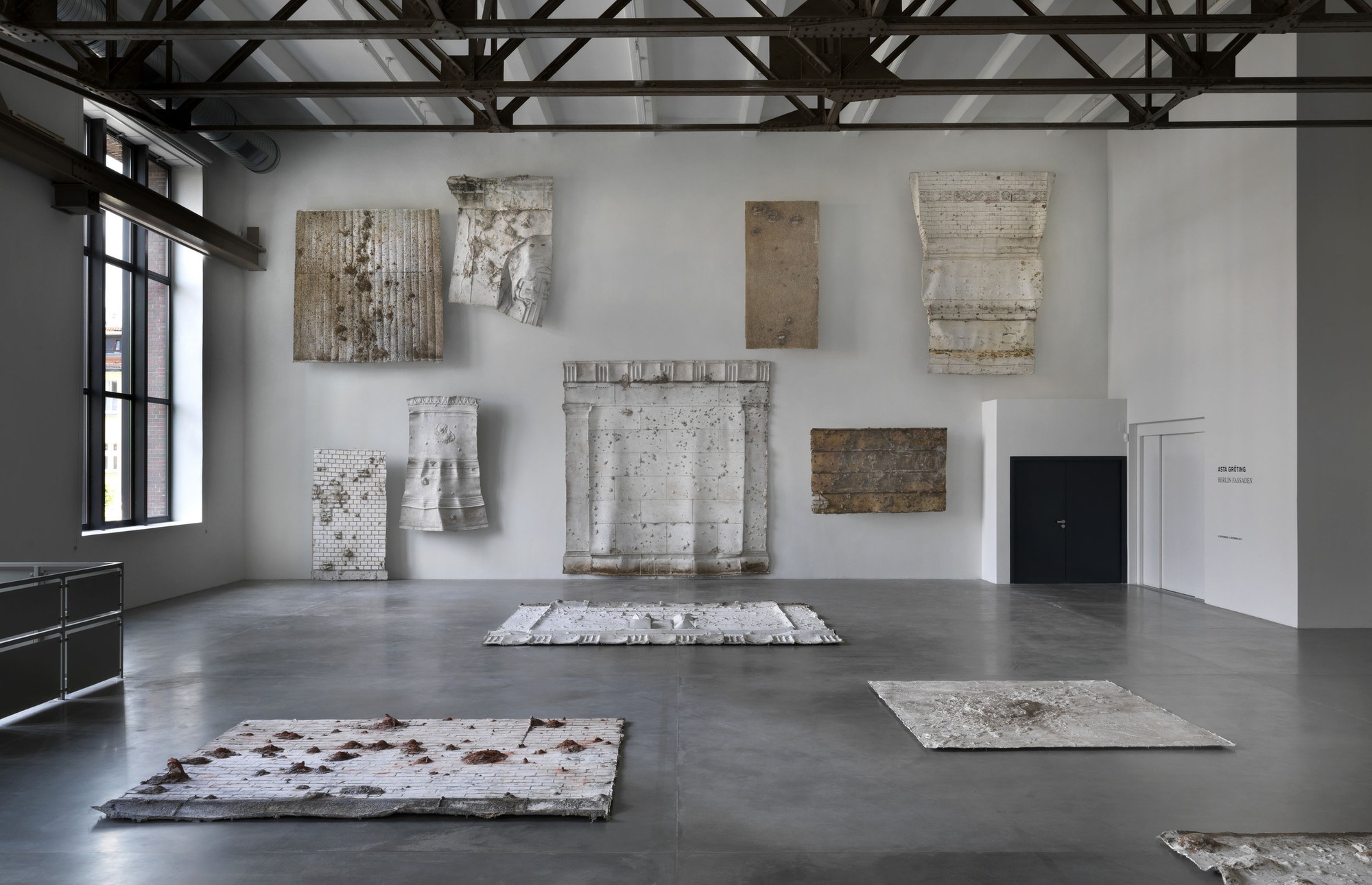Asta Gröting
Berlin Fassaden
10 Sep - 03 Dec 2017

Asta Gröting, Berlin Fassaden, Exhibition View KINDL – Centre for Contemporary Art, Berlin, 2017. Photo: Jens Ziehe
ASTA GRÖTING
Berlin Fassaden
10 September – 3 December 2017
The KINDL – Centre for Contemporary Art is showing the new series Berlin Fassaden by the sculptor Asta Gröting. The point of departure for these works is facades that still contain traces of the Second World War in the form of bullet holes. Asta Gröting replicates the damaged walls in sculpture by making silicone impressions of them. These function like long exposures that depict the story from the moment of the bullets’ impact to the present time. Dust, dirt, and even graffiti are applied to the material and give these negative imprints, some of which are monumental in scale, an almost painted effect.
The bullet holes protrude from the heavy silicone skin like scars of history. The silicone reconstructs wounds as architectural traces and translates them into abstract pictures. “I want to look out into the world from these de-stroyed walls and facades as if I could look into my own face,” says Gröting. These works create an awareness of the fact that we are living in the ruins of history. Bullet holes function as a reminder and a link to an individu-al and collective history that can never be smoothed over.
A comprehensive presentation of works from the series Berlin Fassaden will be shown for the first time at the KINDL.
An accompanying catalogue is available at the KINDL and from Sternberg Press.
Curated by Andreas Fiedler.
Berlin Fassaden
10 September – 3 December 2017
The KINDL – Centre for Contemporary Art is showing the new series Berlin Fassaden by the sculptor Asta Gröting. The point of departure for these works is facades that still contain traces of the Second World War in the form of bullet holes. Asta Gröting replicates the damaged walls in sculpture by making silicone impressions of them. These function like long exposures that depict the story from the moment of the bullets’ impact to the present time. Dust, dirt, and even graffiti are applied to the material and give these negative imprints, some of which are monumental in scale, an almost painted effect.
The bullet holes protrude from the heavy silicone skin like scars of history. The silicone reconstructs wounds as architectural traces and translates them into abstract pictures. “I want to look out into the world from these de-stroyed walls and facades as if I could look into my own face,” says Gröting. These works create an awareness of the fact that we are living in the ruins of history. Bullet holes function as a reminder and a link to an individu-al and collective history that can never be smoothed over.
A comprehensive presentation of works from the series Berlin Fassaden will be shown for the first time at the KINDL.
An accompanying catalogue is available at the KINDL and from Sternberg Press.
Curated by Andreas Fiedler.
